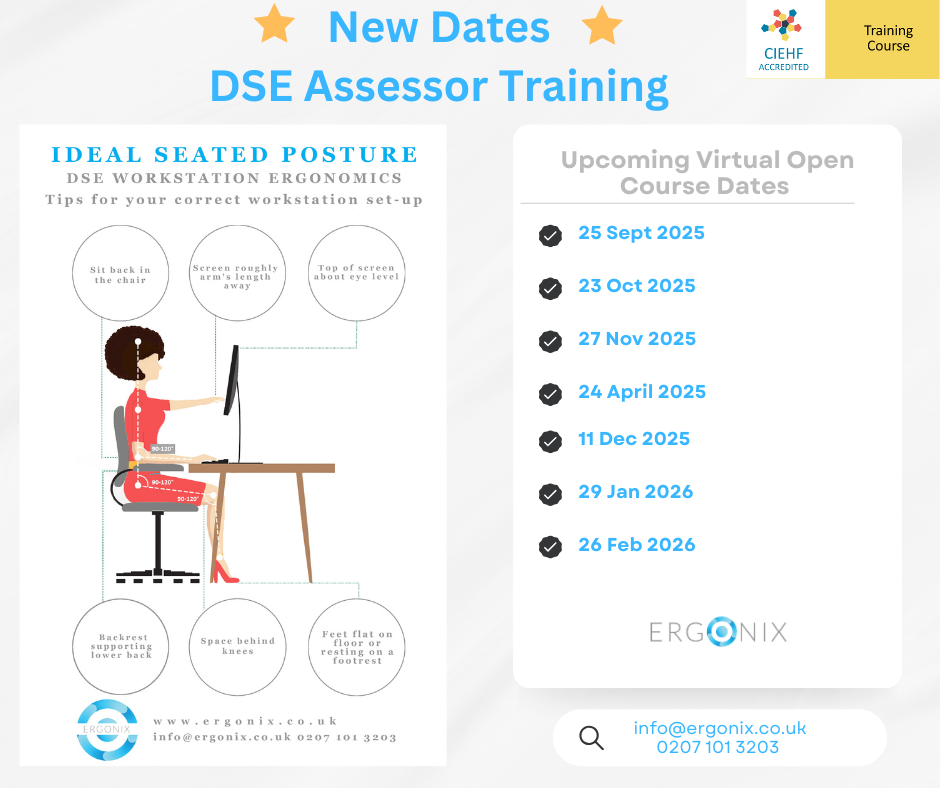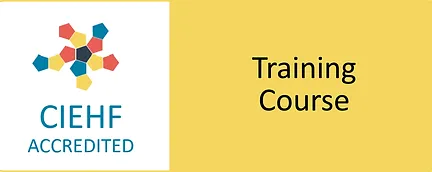 In the realm of employee health and wellbeing, there exists a complex interplay between stress and pain, each influencing the other in a seemingly endless cycle. The question often arises: which comes first, the stress or the pain? Are they two separate entities or merely different manifestations of the same underlying issue?
In the realm of employee health and wellbeing, there exists a complex interplay between stress and pain, each influencing the other in a seemingly endless cycle. The question often arises: which comes first, the stress or the pain? Are they two separate entities or merely different manifestations of the same underlying issue?
This interconnectedness is more than just a theoretical consideration for businesses. The prevalence of employees experiencing pain and mental health issues can significantly impact an organisation’s productivity. Absenteeism and presenteeism due to employees taking time off work or struggling to perform optimally while experiencing pain and mental health issues can lead to decreased efficiency, reduced morale, and poor employee retention, ultimately negatively affecting the organisation’s finances.
Stress and pain often contribute to each other’s exacerbation, leading to a vicious cycle that can be challenging to break. When employees experience continuous, ongoing stress, whether it be from work pressures, interpersonal conflicts, or external factors, their bodies initiate a cascade of physiological reactions designed to cope with the perceived threat or challenge. This stress response can manifest as muscle tension, headaches, gastrointestinal discomfort, and heightened sensitivity to pain.
Conversely, experiencing pain can act as a stressor, leading to heightened anxiety, reduced concentration, and impaired productivity. This added psychological burden further perpetuates the cycle of stress and pain, creating a feedback loop that is challenging to break.
To address this issue, organisations must take proactive measures to support employee health and wellbeing. By implementing holistic strategies that target the physical, psychological and social aspects of stress and pain management, organisations can empower employees to break free from this cycle and thrive in both their personal and professional lives.
Understanding the Link
Stress and pain are intricately intertwined, with one often exacerbating the other in a vicious cycle. When we experience stress, the body’s natural response is to initiate physiological reactions designed to prepare to cope with the perceived threat or challenge. This response is commonly known as the “fight or flight” response, and it involves the activation of the sympathetic nervous system and the release of stress hormones such as cortisol and adrenaline.
Physiologically, stress triggers a series of changes in our bodies that are aimed at increasing alertness, energy, and readiness for action. However, prolonged or chronic stress can have detrimental effects on our physical health, including exacerbating or contributing to the development of pain conditions.
One of the primary physiological responses to stress is the tensing of muscles throughout the body. This muscle tension is a protective mechanism designed to prepare the body for action in response to a perceived threat. However, when stress becomes chronic, this constant muscle tension can lead to discomfort, stiffness, and pain, particularly in areas such as the neck, shoulders, and back.
Moreover, stress can also directly impact the nervous system, leading to heightened sensitivity to pain signals. This phenomenon, known as central sensitisation, can amplify the perception of pain and make individuals more susceptible to experiencing pain even in the absence of an actual injury or tissue damage.
In addition to muscle tension and heightened pain sensitivity, stress can also manifest in other physiological symptoms such as headaches and gastrointestinal discomfort. Stress-induced headaches, including tension headaches and migraines, are common occurrences and can range in severity from mild to debilitating. Gastrointestinal symptoms such as stomach cramps, nausea, and digestive disturbances are also frequently reported in individuals experiencing high levels of stress.
Over time, the cumulative effects of chronic stress on the body can contribute to the development or exacerbation of various pain conditions, including tension headaches, migraines, neck pain, and lower back pain. This results from the sustained activation of stress pathways in the body, leading to inflammation, changes in pain processing pathways, and alterations in hormonal balance, all of which contribute to the onset or persistence of pain.
Conversely, experiencing pain from an injury can also act as a stressor for employees, leading to heightened anxiety, sleep disturbances, reduced engagement in social activities, decreased concentration, and impaired productivity. Additionally, being unable to work due to injury may exacerbate financial stress. This added psychological burden can further perpetuate the cycle of stress and pain, creating a feedback loop that is challenging to break.
Breaking the Cycle
Breaking the cycle of continuous stress and pain requires a multifaceted approach that addresses the physical, psychological and social aspects of wellbeing. Here are some strategies that organisations can implement to support their employees:
Emphasising Identification of Stress and Pain Triggers
Acknowledging stress and pain triggers as pivotal in effective management is crucial. By pinpointing these triggers, individuals gain insight into their responses, empowering them to take targeted action. Likewise, organisations can tailor interventions to support employee wellbeing, boosting productivity.
Encouraging employees to reflect on personal triggers facilitates proactive management. Understanding work-related pressures, conflicts, or external factors aids in developing coping strategies and seeking support. Moreover, promoting a culture that prioritises identifying triggers fosters an environment where employees feel empowered to address these issues collaboratively.
Incorporating this emphasis equips employees with insights for managing stress and pain effectively, fostering a healthier workforce. By highlighting the importance of identifying triggers, it inspires proactive steps toward a resilient workplace.
Promote Stress Management Techniques
Encourage employees to incorporate stress-reduction techniques into their daily routines, such as mindfulness meditation, deep breathing exercises, or progressive muscle relaxation. Providing access to resources such as yoga classes or stress management workshops can empower individuals to better cope with stressors in their lives.
Prioritise Physical Activity
Regular exercise has been shown to alleviate both stress and pain by releasing endorphins, the body’s natural painkillers, and reducing muscle tension. Encourage employees to engage in physical activity during breaks or outside of work hours, whether it’s going for a walk or participating in group fitness classes.
Foster a Supportive Work Environment
Cultivate a culture of empathy and support within the organisation where employees feel comfortable discussing their stressors and seeking assistance when needed.
Promote Work-Life Balance
Encourage employees to prioritise work-life balance by setting clear boundaries between work and personal life. This can involve implementing policies such as flexible working hours, encouraging employees to use their annual leave days, and discouraging overtime work. Emphasise the importance of taking breaks and disconnecting from work-related responsibilities during non-working hours to prevent burnout and promote overall wellbeing.
Encourage Social Connection
Foster a sense of community and social connection among employees to combat feelings of isolation and loneliness, which can contribute to stress and exacerbate pain. Organise team-building activities, social events, and networking opportunities to encourage interpersonal connections and build a supportive work culture. Encourage managers to check in regularly with their team members and create opportunities for informal social interactions.
Provide Access to Mental Health Resources
Ensure that employees have access to mental health resources and support services. This can include providing access to licensed therapists or counsellors through Employee Assistance Programs (EAPs), offering mental health awareness training for managers and employees, and creating a supportive environment where discussing mental health concerns is encouraged and destigmatised.
Implement Ergonomic Workstations
Ensure that employees have access to ergonomic furniture and equipment to minimise the risk of musculoskeletal injuries and alleviate physical discomfort. Providing ergonomic DSE (display screen equipment) workstation assessments can help individuals maintain proper posture and reduce strain on their bodies during prolonged periods of sitting. Encourage employees to take frequent breaks and promote stretching and movement as part of your organisation’s culture.
Embedding these practices into daily routines can help alleviate muscle tension and prevent the development of pain conditions associated with prolonged sedentary behaviour. Additionally, consider offering workshops or training sessions on proper ergonomics and posture to educate employees on best practices for maintaining physical health while working.
Offer Flexible Work Arrangements
Recognise that everyone’s stressors and pain triggers may vary, and offering flexible work arrangements, such as remote work options or flexible hours, can empower employees to better manage their workload while prioritising their wellbeing. Additionally, implementing policies that promote a healthy work-life balance, such as limiting after-hours emails or encouraging employees to take regular breaks, can prevent burnout and reduce stress levels.
Lead by Example
Leadership plays a crucial role in shaping organisational culture and setting the tone for employee wellbeing. Leaders should prioritise their own self-care practices and openly communicate about their own experiences with stress and coping mechanisms. Leading by example and demonstrating a commitment to employee wellbeing, leaders can inspire trust, foster open communication, and create a supportive environment where employees feel valued and empowered to prioritise their health. Additionally, leaders can actively participate in wellbeing initiatives, such as mindfulness sessions or team-building activities, to reinforce the importance of employee health and foster a culture of holistic wellbeing throughout the organisation.
In conclusion, the relationship between continuous stress and pain is complex and multifaceted, with each influencing the other in a cyclical manner. By adopting a holistic approach to employee health and wellbeing — one that addresses the physical, psychological, and social factors contributing to stress and pain — organisations can empower their employees to break free from this cycle and thrive both personally and professionally. By promoting stress management techniques, prioritising physical activity, fostering a supportive work environment, implementing ergonomic workstations, and offering flexible work arrangements, organisations can create a workplace culture that values and prioritises the health and wellbeing of its employees. In doing so, they can not only enhance employee satisfaction and productivity but also cultivate a positive and inclusive workplace where individuals can flourish.
If you would like to find out more about our Wellbeing Workshops, virtual or face-to-face DSE Assessor Training Courses and DSE Assessments, we would love to hear from you.
Recommended reading:
Employee Health. A Priority Worth Perusing.
Low Back Pain- busting the Myths.
How to Support Mental Health at Work. Mental Health Foundation.







